Architectural firm, Gruppo 7 was born in 1926, during the Italian fascist regime. Mussolini’s self-celebration propaganda influenced new architecture, art and communication.

Image source:https://search.creativecommons.org/photos/8622628f-3970-4b11-8591-593854c81ca1 by Anna Castagnoli
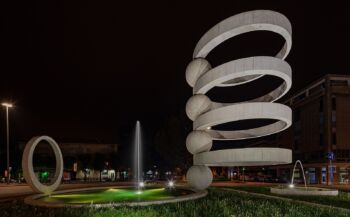
Image source: https://commons.wikimedia.org/wiki/File:Fontana_di_Camerlata_di_notte.jpg
Italian Rationalism
To trace Italian Rationalism, one must look past architects and innovations. Once done, groups, movements, and a wider, intricate image can be seen. Established between the 1920s and the 1930s, many recognizable names partecipated in the experience, such as the Gruppo 7 studio. The collaboration between Figini, Guido Frette, Sebastiano Larco, Gino Pollini, Carlo Enrico Rava, Giuseppe Terragni and Ubaldo Castagnoli soon became a cornerstone in the regime’s plans to rebuild Italy.
Gruppo 7’s Manifesto
The Gruppo 7’s manifesto contains some of the most important topics that underline the struggle of all interpretations of a “new architecture” in Italy, including new tecnologies meant to bring forth a new understanding on building construction. Additionally, it had new influences and approaches to the subject, pioneered by illustrious names such as Le Corbusier, Mies Van Der Rohe, or Walter Gropius. Also, a direct consequence, the need to contest and reinterpret both new and old paradygms alike is also present in their work.
However, Gruppo 7, for all its declarations, meant not to forgo traditions in architectural practice. It can be thus argued that Gruppo 7 wanted to bridge tradition and novelty, classicism and functionalism. In other words, they desired to recapture the geometries, rythms, proportions and refinement from the former, while embracing the opportunities, languages and means of the latter. Nonetheless, this opened the door to many discussions and debates, especially from the academic echelons.
By 1928, Gruppo 7 merged with MIAR (Movimento italiano per l’architettura razionale), the promoter of three Esposizioni italiane di architettura razionale. In a short-lived and failed attempt to market the new Italian style to the nation, eventually, not aided by frictions between its organizer, Pietro Maria Bardi, and the rest of the fascist party, started dissolving in 1931. What remained of the collective was turned into the RAMI (Raggruppamento architetti moderni italiani), to whom Larco and Rava eventually adhered as well.
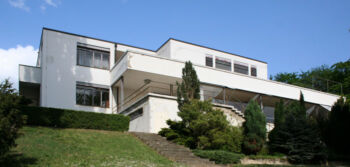
European Modernism
As an architectonic expression, Modernism focused on efficiency, functionality, and minimalism. Also, the style paid close attention to architecture, with the end goal of solidifying Mussolini’s plan: an Italy filled with high-production industries. Architecture became an important tool for fascism and his propaganda. Thus, he enthralled architects with a stripped down, militaristic approach to classical architecture. Such a move, was part of the regime’s attempt at aping the Imperial Roman aesthetic.
As a form heavily influenced by minimalism, Modernism was the most important new style of architecture and design of the 20th century. Further, it is considered an analytical approach to functional, structural innovation, and it embraces the philosophy, “less is more.”
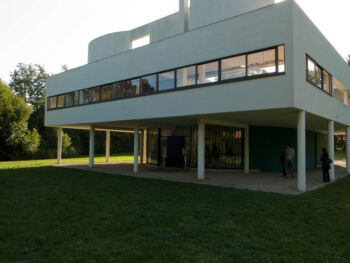
Image source: https://www.wondervilla.it/blog-dalla-casa-elettrica-alla-casa-domotica/ Author: admin
La Casa Elettrica
Inspired by Giò Ponti, the Italian General Edison Society of Electricity- sponseored the “Electric House.” Built by Gruppo 7, it is an example of modern home design that displayed the new tenets of rational architecture. Additionally, the structure showed how most modern, electricity powered house appliances could be integrated into design.
From the planivolumetric setting, it is possible to look at the extreme simplicity of this prototype of modern home. Further, its affinity with the principles of Le Corbusier’s architecture, are especially notable when observing the balance and hierarchy of internal and external spaces.
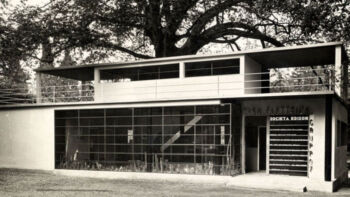
Image source: https://www.wondervilla.it/blog-dalla-casa-elettrica-alla-casa-domotica/ Author:admin
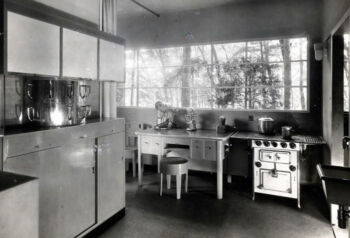
Image source:https://www.wondervilla.it/blog-dalla-casa-elettrica-alla-casa-domotica/ Author:admin
Heritage
Rationalism, despite lasting less than a decade left many traces, observable throught Italy. In Ivrea, Adriano Olivetti wanted Figini and Pollini to build him the complex of the Officine ICO in Alessandria. Thus, Ignazio Gardella designed the Anti-tuberculosis dispensary in Milano while Pagano built one of the most important universities in the world, Bocconi University.
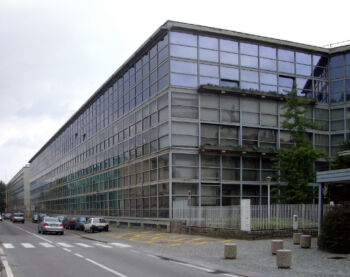
Image source: https://it.wikipedia.org/wiki/Figini_e_Pollini#/media/File:Olivetti_Building_Ivrea.jpg
Info sources:
https://www.domusweb.it/en/movements/italian-rationalism.html
